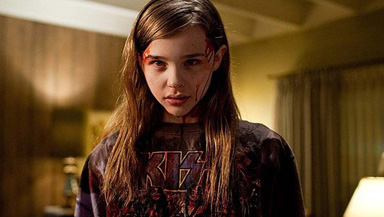|
|
The 400-Word Review: CarrieBy Sean CollierOctober 21, 2013
It’s still all about sexual awakening, female empowerment and teenage uncertainty; in every iteration of Carrie (okay, maybe not the musical,) that’s all there and it always works. Other than some technological necessities — hello, cyber-bullying! — and a handful of unnecessary-if-minor additions, Pierce’s Carrie is simply a retelling. Chloe Grace-Moretz’s turn in the title role is a little bit more savvy, emotive and headstrong than Sissy Spacek’s; the first performer got it just right, but Grace-Moretz does a fine job with her rendering. Julianne Moore ups the psychosis and downs the matronly charm on Margaret White, with mixed results; she’s clearly trying to distinguish herself from Piper Laurie’s Oscar-nominated turn. Aguirre-Sacasa’s script is subtle and selective in its attempts to further elucidate on King’s story, and most of its additions concern Margaret. A before-the-credits opening sequence of Carrie’s birth, meant to mirror the shower scene, is the film’s weakest moment; a harrowing scene at Margaret’s place of employment, a sleepy dry cleaner’s, does better. Aguirre-Sacasa gives Carrie more than she might need, but doesn’t mess with the character. It all hinges on the climactic bloodbath, which is close enough to the mark; it might’ve been a bit longer, but pays off the slow build of the story as it should. That’s the order of everything in this Carrie: a little different, fair enough and familiar. There’s nothing to condemn it — but nothing to recommend it over another visit to de Palma’s film, either. Sean Collier is the Associate Editor of Pittsburgh Magazine and a member of the Broadcast Film Critics Association. Read more from Sean at pittsburghmagazine.com/afterdark
[ Read more 400 word movie reviews ]
[ View other movie reviews ]
[ View other columns by Sean Collier ] [ Email this column ]
|

|
|
|

|
Thursday, October 31, 2024
© 2024 Box Office Prophets, a division of One Of Us, Inc.


